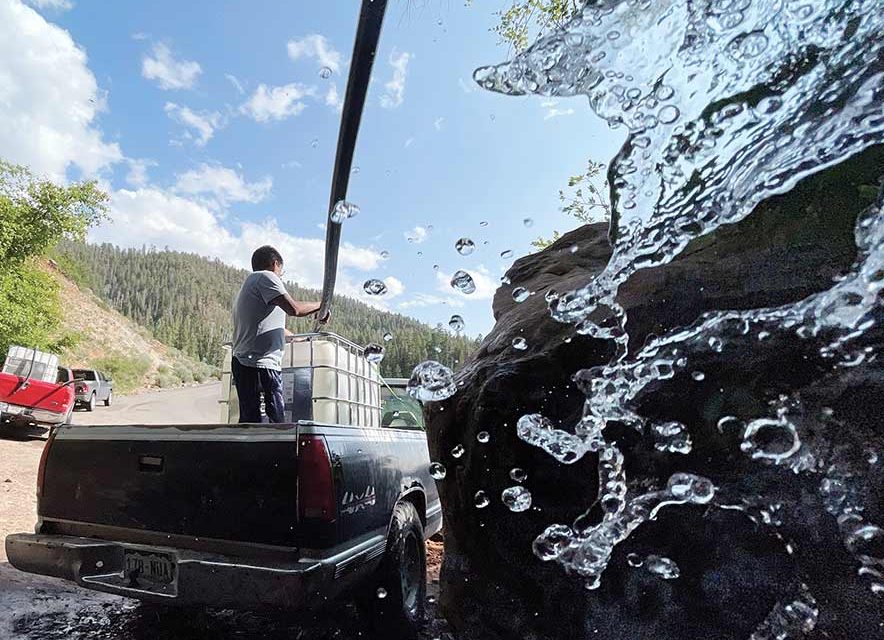Artesian wells provide drinking water for families

Navajo Times | Donovan Quintero
Michael Bia from Lukachukai, Ariz., gets water from a natural spring last Thursday on the Chuska Mountains near Buffalo Pass.
BUFFALO PASS, Ariz.
Water restrictions don’t faze Michael Bia and his mother.
The pair were up on Navajo Route 13 on Thursday afternoon filling their 275-gallon water tank with artesian water.
Bia stood on the back his pickup truck patiently holding a 4-inch PVC tubing, about 10-feet in length.
He said it takes about 45 minutes to an hour to fill the tote, which they use for their livestock and themselves.
“As far as I know, we’ve been getting the water all my life,” Bia said. “I’m 35 years old, so for 35 years, ever since I was born.”
This means that Bia’s been drinking the water all his life.
His mother, who did not want to give her name, agreed.
“It’s pretty good tasting water,” she said.
The pair say they haul water twice a day. But they don’t always get the water from the naturally flowing stream that comes from the Chuska Mountains.
Because it’s free, they say they go there often to fill up a tank.
Bia’s mother said for her entire life she’s also been driving up to the mountain to get water.
“We don’t have running water or an artesian well,” she said. “We don’t get our water from here all the time.”
Sometimes they get their water from the Lukachukai Chapter, but lately the water doesn’t taste right. Even her livestock notices the taste and do not drink it, she added.
“Sometimes the water is yellow,” she said.
So, they go to the church. But that place has been getting trashed, which bothers her, said Bia’s mother.
Bia held the PVC tubing, steadily holding so he didn’t spill too much of it.
Meanwhile, another family patiently waited their turn to get some water. They said they use the water primarily for their crops.
The Navajo Tribal Utility Authority recently issued water restrictions for its water-loading station customers until further notice.
NTUA also issued a statement asking customers with piped water to conserve water because of a water shortage, said Rex Kontz, deputy general manager for NTUA, attributing that drought is the cause of the water shortage.
Currently, there are 18 NTUA water-loading stations and 59 watering points IHS built to help Navajo families get potable water during the coronavirus pandemic. The only catch: they can’t use it for their livestock or their crops.
For Bia and his mother, they filled their tank, loaded up their tubing and headed for home.








 Highway 264,
Highway 264, I-40, WB @ Winslow
I-40, WB @ Winslow